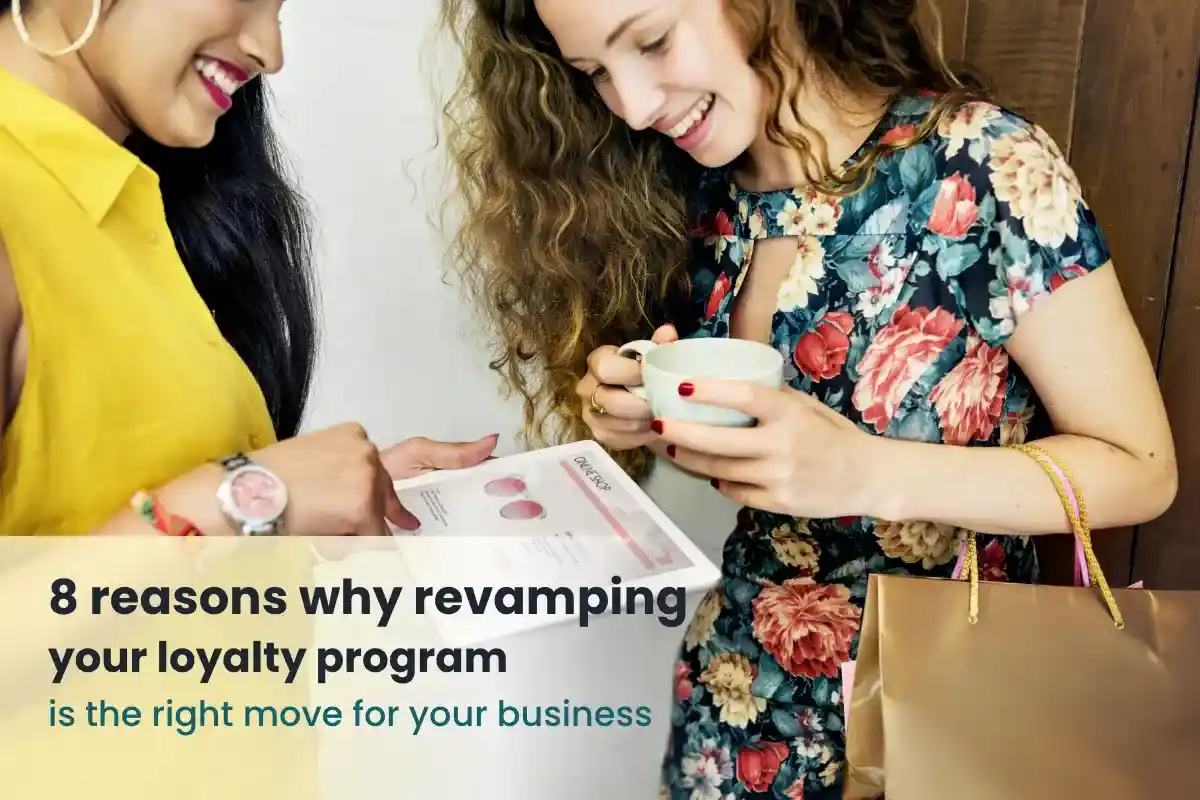Loyalty programs are supposed to make customers feel valued and encourage repeat business. But what if your program is doing the opposite? Outdated systems, uninspiring rewards, and a lack of personalization can turn a once-loyal customer into a lost one. Revamping loyalty program strategies or even re-platforming the program can solve this issue.
Here’s the reality: 75% of consumers prefer brands that offer rewards programs, but if your program isn’t meeting their expectations, you could be losing ground. Whether it’s offering irrelevant rewards, failing to engage digitally, or being outpaced by competitors, the cost of sticking to an outdated program is too high.
In this blog, we’ll explore what it means to redesign your loyalty program, the signs it’s time to act, and the seven major reasons why revamping your loyalty program could be the game-changer your business needs.
What does it mean to redesign a loyalty program?
Revamping a loyalty program goes beyond minor adjustments—it involves adopting innovative approaches like AI-driven personalization or mobile-first strategies, as demonstrated by Starbucks’ app that seamlessly integrates rewards with customer convenience. It means aligning the program with your customers’ evolving preferences and leveraging technology to create an integrated, seamless, and personalized loyalty experience that enhances brand loyalty.
- Modernizing rewards: Tailoring rewards to specific customer preferences, such as offering flexible redemption options or experiences like early product access, can significantly enhance program engagement and loyalty. For example, a hotel chain could expand from offering free stays to including points for dining, spa services, or car rentals. Exclusive experiences like VIP events or tailored product recommendations can also boost engagement.
- Incorporating advanced technology: Integrating advanced digital platforms is critical for creating effective modern loyalty programs, enabling real-time engagement and data-driven personalization. Real-time point tracking, AI-powered personalization, and mobile app integration allow businesses to deliver intuitive and data-driven rewards program experiences. Starbucks’ app, for instance, enables customers to earn points, redeem rewards, and order ahead—creating a seamless customer journey.
- Improving customer interaction: Gamification elements like tiers, badges, and challenges add a sense of achievement and make loyalty programs engaging. Nike’s membership model, which ties rewards to fitness milestones, is a great example of driving regular customer interaction.
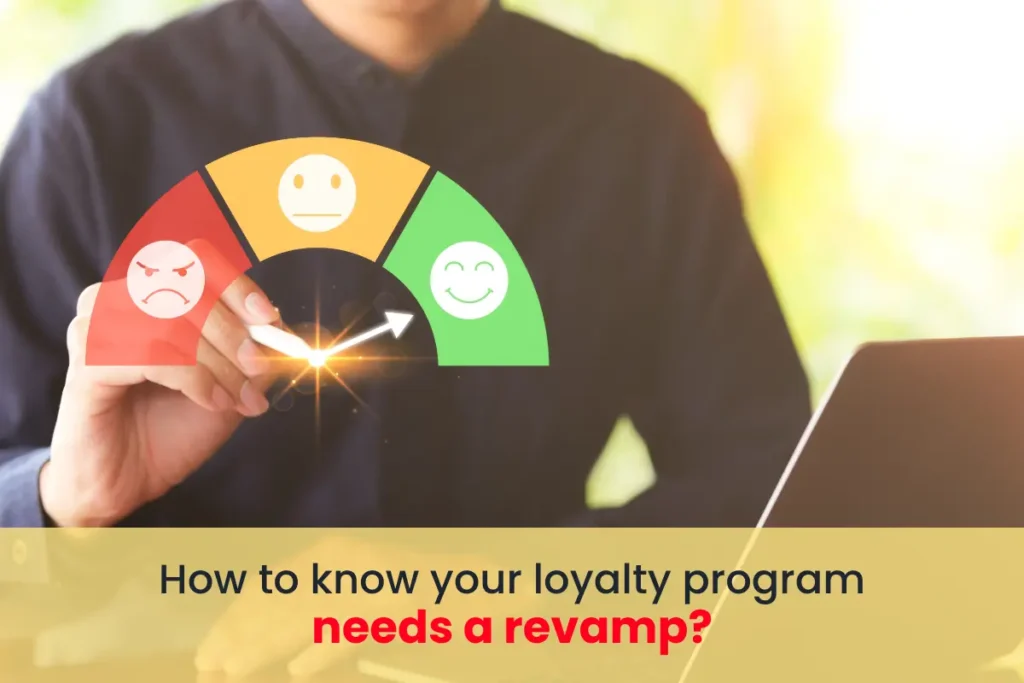
How do you know your loyalty program needs a revamp?
Wondering if your loyalty program needs an overhaul? The best way to find out is by analyzing loyalty program performance using specific metrics and KPIs. By tracking these indicators, you can pinpoint areas that need improvement and decide whether it’s time for a revamp.
Key metrics to evaluate your loyalty program
1. Customer Retention Rate
This measures how well your program is keeping customers loyal over time. A declining retention rate indicates your program isn’t fostering long-term relationships.
2. Participation Rate
What percentage of your customers are actively participating in your loyalty program? A low participation rate suggests that the program isn’t engaging or appealing enough.
3. Redemption Rate
How often are customers redeeming their points or rewards? A low redemption rate can signal that your rewards are not valuable or accessible to your audience.
4. Customer Lifetime Value (CLV)
Does your loyalty program increase the average value a customer brings to your business over their lifetime? If CLV isn’t improving, it’s time to reevaluate your strategy.
5. ROI on Loyalty Program
Compare the cost of running your program against the revenue it generates. A low ROI means your program isn’t delivering enough value to justify its expense.
6. Net Promoter Score (NPS)
This measures customer satisfaction and loyalty by asking how likely they are to recommend your program. A low NPS indicates a lack of enthusiasm or satisfaction.
Evaluate and act
If your metrics show weak performance, a revamp is likely needed. Start by identifying specific gaps and redesigning your program to address them. Zinrelo’s guide on measuring loyalty program success can help you analyze these KPIs effectively.
A regular performance check ensures your loyalty program evolves with your customers’ needs, keeping it relevant and impactful.
Why revamping loyalty program is the right move for your business?
1. Outdated program features
If your program still relies on manual processes, paper punch cards, or basic points accumulation, it is likely failing to meet modern customer expectations. Features like mobile app integration, real-time point tracking, and seamless omnichannel rewards redemption are now the norm. Customers also expect programs to adapt to their digital lifestyles, offering easy access through smartphones, wearable devices, or e-commerce platforms.
By upgrading to a modern loyalty platform, such as Zinrelo, businesses can introduce cutting-edge features like gamification, AI-driven personalization, and advanced analytics. These innovations keep your program relevant, user-friendly, and competitive, ensuring a seamless experience that fosters long-term loyalty.
Example: Target loyalty program
Target revamped its loyalty program to meet the demands of the modern digital consumer by integrating mobile wallet functionality and personalized offers directly into its app. Members can easily track their rewards, receive tailored discounts based on shopping habits, and redeem points seamlessly, whether they shop in-store or online. By aligning the program with customer preferences and digital lifestyles, Target has created a user-friendly and engaging experience that encourages repeat visits and long-term loyalty.

2. Increase customer retention
Retention is the cornerstone of business success, and a well-designed loyalty program plays a critical role in keeping customers loyal. However, if your program feels transactional rather than relational, customers may drift to competitors who make them feel more valued. In fact, 79% of consumers are more likely to engage with a loyalty program offering personalized rewards and experiences. Revamping loyalty program strategies to focus on emotional connections, such as personalized rewards or exclusive experiences, can drastically improve retention.
A modern loyalty program ensures customers feel appreciated, strengthening their bond with your brand and encouraging long-term loyalty.
3. Collect actionable data
An outdated loyalty program often lacks the tools to gather meaningful customer data, leaving businesses in the dark about their customers’ preferences. If you revamp your program with advanced analytics and tracking systems, see up to 60% improvement in the ability to understand customer behavior.
For example, you can monitor purchase patterns, identify top-performing products, and segment customers based on their behaviors. This data allows you to create targeted campaigns and personalized offers that resonate with specific customer groups.
Additionally, data-driven insights help refine your program, ensuring it evolves with your customers’ changing needs. A revamped program isn’t just a tool for rewards; it’s a goldmine for strategic decision-making.
4. Enable better personalization
Generic, one-size-fits-all rewards are no longer enough to foster loyalty. By integrating AI and data analytics into your loyalty program, you can offer tailored experiences.
Personalized perks, such as birthday discounts or exclusive offers, make customers feel valued and seen. When customers receive rewards that genuinely appeal to them, they are more likely to stay loyal and engage with your brand.
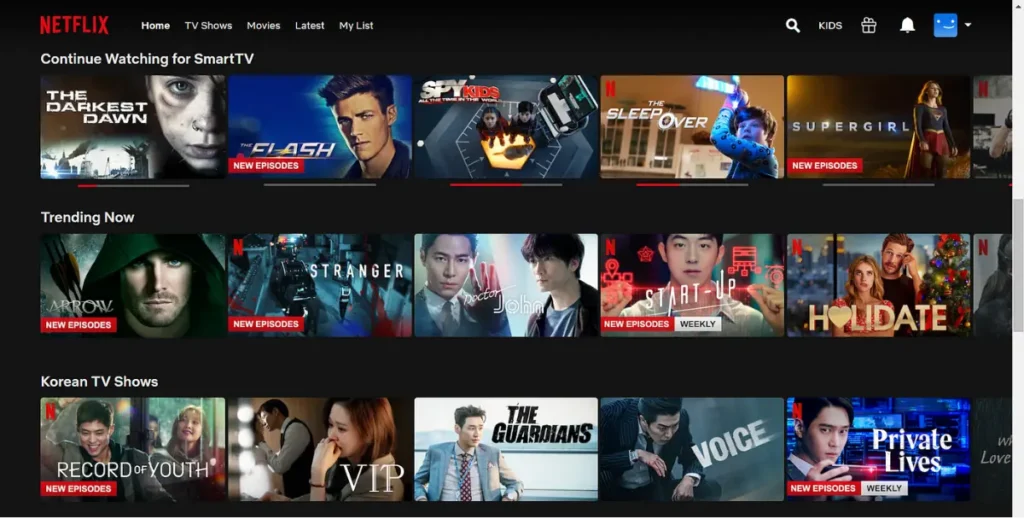
Example: Netflix’s recommendation engine
Netflix’s recommendation engine is a prime example of how personalization can drive engagement and loyalty. By analyzing viewing patterns, preferences, and user ratings, Netflix suggests content tailored to each individual’s tastes. This keeps users engaged and coming back for more. Similarly, a loyalty program can leverage customer purchase history, browsing habits, and preferences to suggest rewards or products that align with their interests. For example, a program might recommend exclusive discounts on favorite items or curated offers based on past purchases, creating a tailored and engaging experience.
5. Differentiate your brand
A unique, modern program shows customers that you prioritize their experience. By introducing innovative features like gamification, early access to products, or partnerships with complementary brands, you create a loyalty program that stands out. A differentiated program not only attracts new customers but also strengthens your brand’s position as innovative, customer-focused, and ahead of the curve.
Example: The North Face’s XPLR Pass
The North Face’s XPLR Pass sets itself apart by aligning its loyalty program with the brand’s core identity. In addition to offering discounts, the program provides members with exclusive access to adventure-related experiences. This approach not only rewards customers but also reinforces The North Face’s positioning as a leader in the outdoor lifestyle space. By integrating experiences that reflect the brand’s mission, The North Face creates a loyalty program that feels authentic, exciting, and differentiated from generic offerings.
6. Scale with business growth
Older programs often have rigid structures that fail to accommodate new customers, product lines, or markets. A revamped loyalty program with scalable technology ensures that your rewards system remains seamless as your customer base expands.
By redesigning your program with scalability in mind, you future-proof your system, ensuring it continues to deliver value for your business and your customers, no matter how much you grow.
Example: Amazon
Amazon has integrated scalable solutions in its subscription program, allowing millions of Prime members to enjoy consistent benefits worldwide.
7. Improve ROI
Modernizing your program ensures that every dollar invested drives measurable results. By incorporating features like AI, gamification, and personalized offers, you can increase customer spending and reduce churn, leading to a higher return on investment. For example, brands that invest in tiered rewards often see customers spending more to reach higher levels.
A revamped program also streamlines operations, reducing administrative costs and inefficiencies. With a modern, data-driven approach, your loyalty program becomes not just a cost center but a revenue-generating asset that drives sustained business growth.
8. Boost customer engagement
An outdated loyalty program can feel uninspired, leading to dwindling participation over time. Customers want rewards that are not only enticing but also engaging. One effective way to revitalize engagement is by introducing gamification elements, such as challenges, badges, or milestones.
For instance, adding tiers to your program—like bronze, silver, and gold levels—motivates customers to reach higher levels for better perks. By making your program fun and rewarding, you create an experience that customers actively want to participate in, boosting engagement significantly.
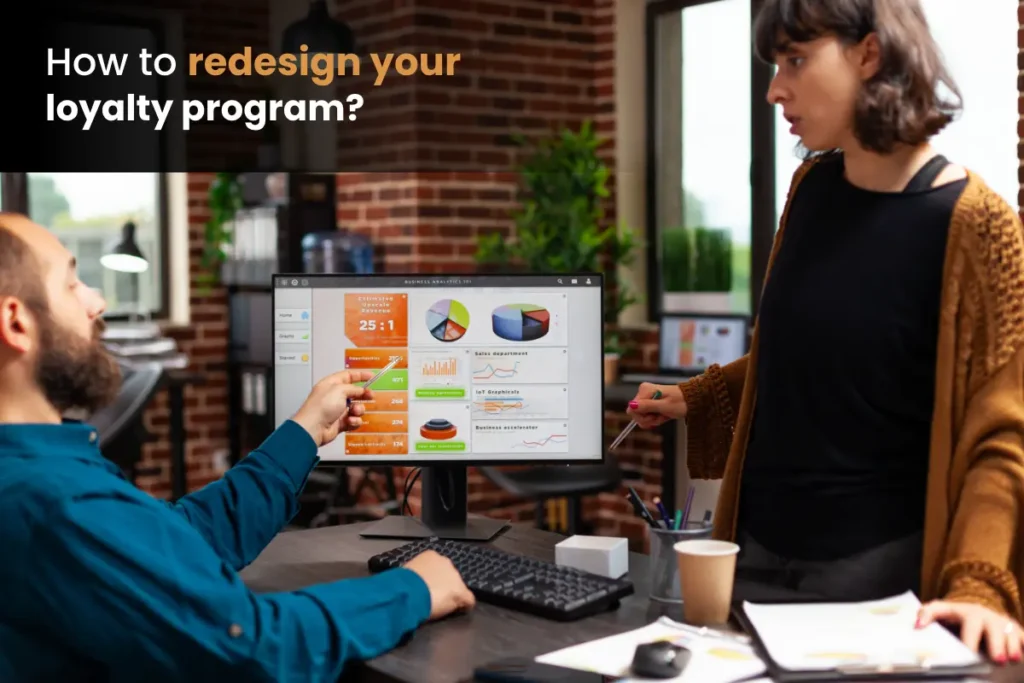
How to redesign your loyalty program
1. Conduct an audit
Analyze your current program’s strengths and weaknesses. Look at metrics like participation rates, customer feedback, and ROI.
2. Define objectives
What’s the goal of your revamped program? Whether it’s improving engagement or driving higher spend, having a clear objective ensures a focused redesign.
3. Incorporate modern features
Add tools like real-time tracking, AI-driven personalization, and gamification. Platforms like Zinrelo simplify this process with their ready-to-use solutions.
4. Test and iterate
Roll out changes in phases and gather feedback. Continuously refine your program based on data and customer input.
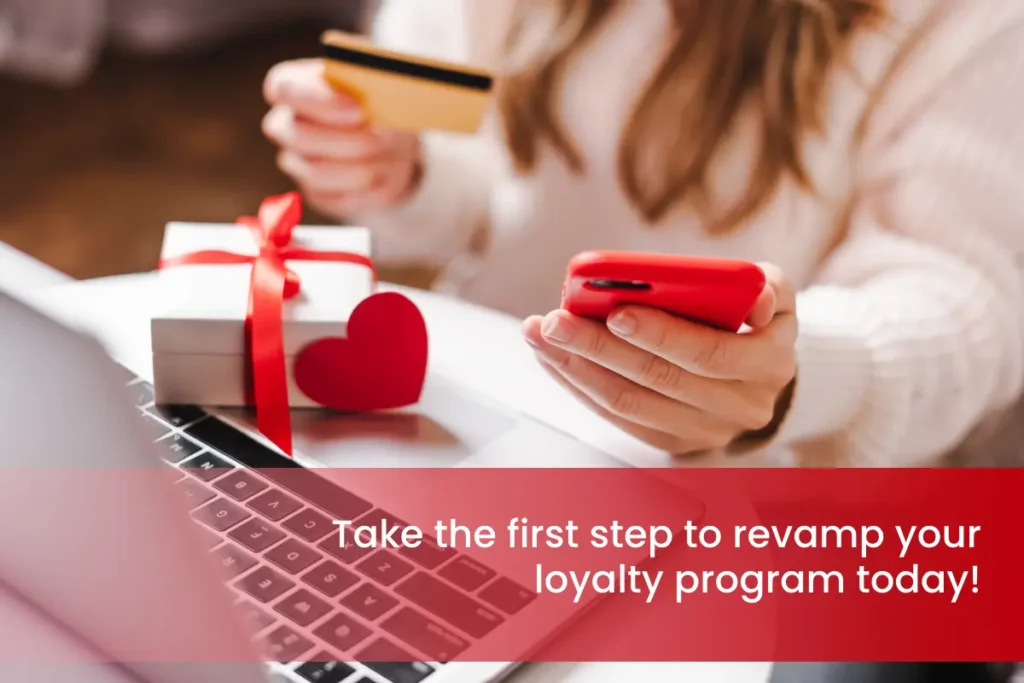
Conclusion
A loyalty program is a long-term investment in your customer relationships. But an outdated loyalty program can hold your business back in more ways than one. From declining customer engagement to low ROI and missed opportunities for personalization, the disadvantages of sticking with an old system are significant. Ineffective targeting, poor scalability, and outdated features can erode customer trust and push them toward competitors offering more innovative solutions.
Modernizing your loyalty program is the key to eliminating these issues. By revamping loyalty program strategies, you can create meaningful connections with your customers through personalized rewards, cutting-edge technology, and engaging experiences. A refreshed loyalty strategy ensures greater customer satisfaction, improved retention, and scalable growth for your business.
Don’t let an outdated program limit your potential. Take the first step to revamp your loyalty program today!
